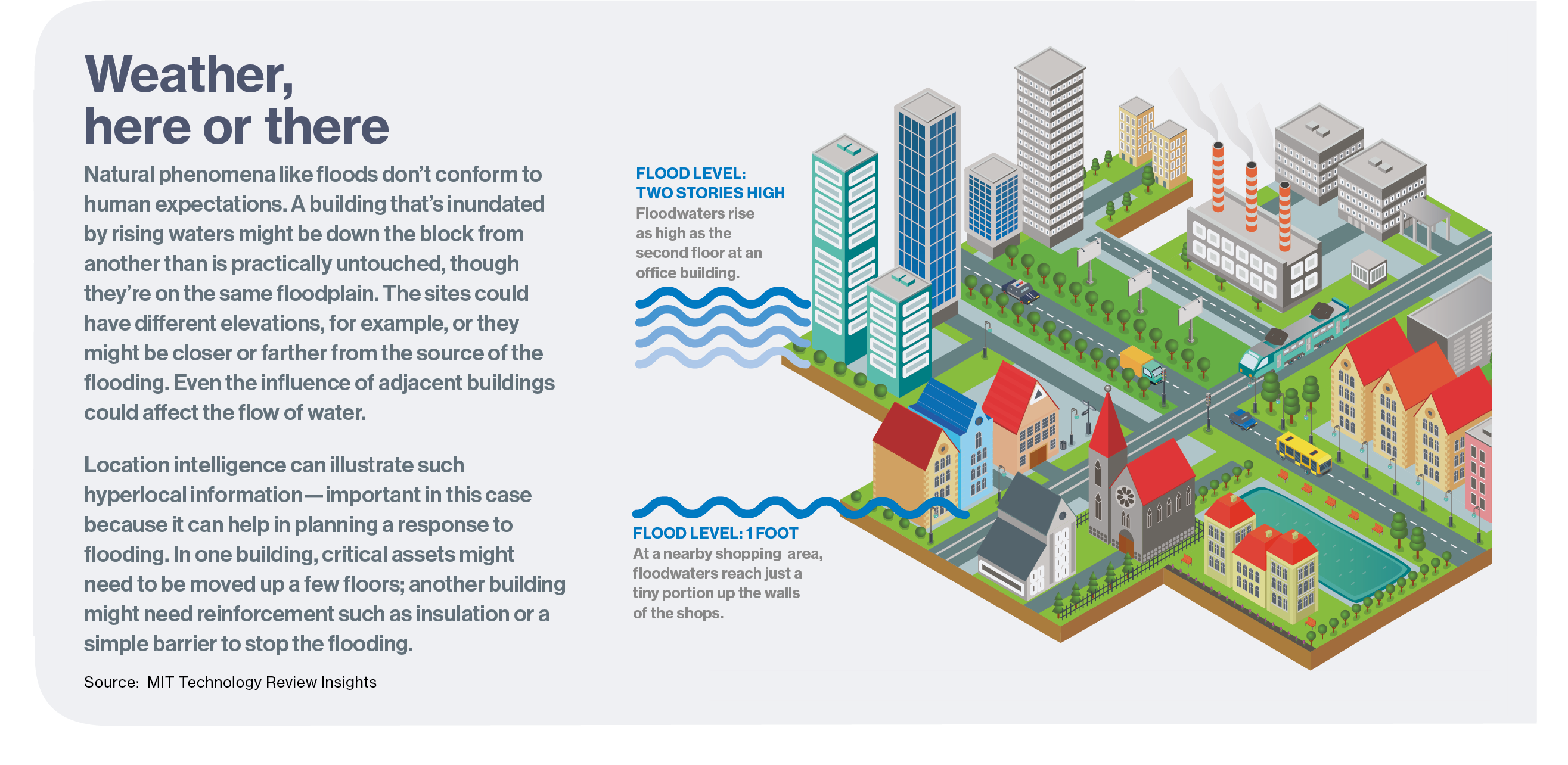Methods of mapping climate resilience

[ad_1]
Shannon Carroll, AT&T Global Environmental Sustainability Director, said: “We only know that this is the right thing for our customers-I say this from years of risk management experience-it is good basic risk management.” “If all signs indicate that something will happen in the future, then we have a responsibility to prepare for it.”
Globally, leaders in governments, businesses, and academia have seen the urgency. World Economic Forum 2021 Global Risk Report The extreme weather caused by climate change and man-made environmental damage is listed as the most urgent risk in the next decade. When referring to the most influential risks, interviewees listed failures in climate action and other environmental risks second only to infectious diseases.
AT&T is taking action Climate Adaptation Project, Using spatial data analysis and location information to solve the complex problem of how the increasingly powerful storm affects infrastructure such as base stations and the ability of telecommunications to provide services to customers. “Spatial analysis is a way of going beyond what we see visually,” explains Lauren Bennett, head of spatial analysis and data science at geographic information system (GIS) company Esri. “It goes beyond the data-driven approach and is more a knowledge-driven approach.”
To better understand its vulnerability, AT&T cooperated with the Argonne National Laboratory of the U.S. Department of Energy. Their common task is to determine the company’s infrastructure and real estate risks based on historical weather events and forecasting models. They input company asset data and climate data from the laboratory into the GIS, which can layer a large number of different information in the context of location for visualization and analysis. The output of all these multifaceted information is called location intelligence.
“When we talk about GIS,” said Jay Theodore, Esri’s chief technology officer, “we can expand to the world to solve global problems, but we can also zoom out and bring a magnifying glass to nearby things, also study it.”
AT&T plans for today’s future
“Everyone needs a plan to deal with climate change,” Carroll said. AT&T’s plan centers on advanced spatial analysis to understand how destructive storms and other climate change-driven phenomena across the United States will affect nearby infrastructure. Ultimately, companies will be able to predict the location and extent to which climate events may affect customers. AT&T understands that without a resilient network, the broadband connections needed to bridge the digital divide are also at risk. “Our priority is to ensure that our network can serve our customers in 20 or 30 years,” Carroll said.
The basis of AT&T GIS is a map that identifies the location of company offices and stores, cell phone towers and servers, storage facilities, underground and above-ground wires and conduits, and other infrastructure. At the top of the map is the climate change data analysis commissioned by Argonne by AT&T. Argonne and AT&T have jointly created a climate change analysis tool that can predict the frequency, extent and location of floods, high-speed winds, wildfires, and droughts in approximately 30 years.

Location intelligence visualizes climate-related risks of AT&T infrastructure based on contextual information and science-driven knowledge. Without GIS to spatially link Argonne’s climate analysis with company maps, AT&T would have a bunch of inexplicable data arranged in separate spreadsheets and databases—more than 500 billion pages of text in total. As Theodore explained, “If you want a complete picture, if you want to make the right decision, you have to introduce location.”
For example, as pilots, AT&T and the Argonne team used their climate change analysis tools to look at areas in the southeastern United States that are susceptible to flooding and strong winds. “Get some of the best climate data available from the Argonne National Laboratory and then overlay it into the GIS so that you can visualize it-this is very exciting in itself,” Carroll said. With exceptionally detailed information, executives can determine how infrastructure in four states (Georgia, North Carolina, South Carolina, and Florida) will be affected by storm events in the next few decades and 50 years. “Not every [asset] Even if they are very close, they face the same risks,” Carroll points out. Such assessments can prove helpful for more precise planning—for example, allocating resources to possibly relocate, retrofit, or strengthen infrastructure to prevent potential damage.
A key principle of the sustainable development of telecommunications involves a strategy that many companies avoid-sharing data. The AT&T team engaged in climate risk analysis decided to provide their data to everyone. They promoted the visit through press releases and social media channels, encouraging people and groups to download it. “You have no competition when it comes to building climate resilience. This is where you collaborate,” Carroll said. “We encourage everyone to use this data because if we are resilient, it will not do us any good, but the rest of our value chain will not.”
download Full report.
[ad_2]
Source link

